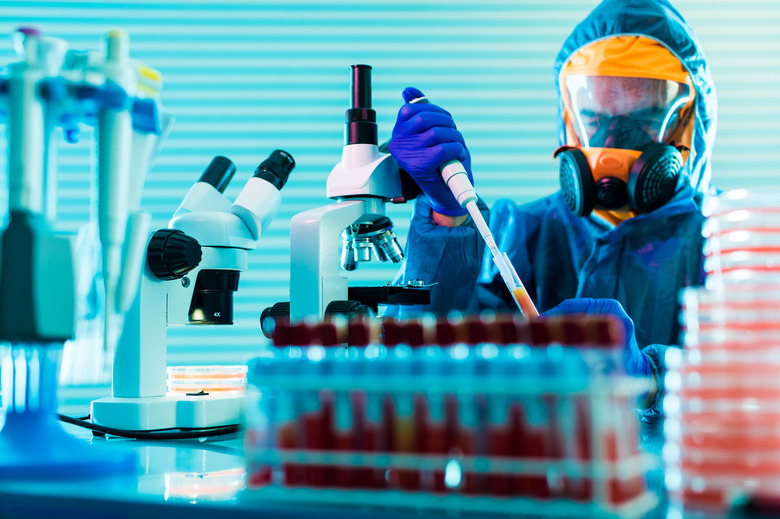munkle
Diamond Member
- Dec 18, 2012
- 5,557
- 9,690
- 2,130
This is a good news aggregation of major sources. Poll: Are you taking it? Not me.

 coronanews123.wordpress.com
coronanews123.wordpress.com

20% of “Operation Warp Speed” Moderna Vaccine Trial Group Gets Sick
As the revised survival rate overall for COVID-19 goes up to 99.8% , human trials for Moderna’s mRNA-1273 vaccine have resulted in three out of 15, twenty percent, of one group of volunteers …
Legislatures and Courts Pushing Back at Governors Over COVID Orders
#NoUnsafeVax
As the CDC’s infection fatality rate for COVID-19 trends sharply downward, to .25%, human trials for Moderna’s mRNA-1273 vaccine have resulted in three out of 15, twenty percent, of one group getting seriously ill. The volunteers experienced reactions involving their whole bodies, classified as “serious” adverse events. “Serious” adverse events are reactions which require hospitalization or medical intervention.
An infection fatality rate of .25% means the survival rate of all people who get COVID-19 is about 99.8%, versus flu at about 99.9%
Moderna is one of the Trump administration’s “Operation Warp Speed” companies which is receiving billions in federal funds to develop a COVID vaccine, possibly by this October, a controversial time-frame. At the same time, state legislatures and state courts have taken the lead in over-riding governors’ mandates that opponents say are overly broad and far-reaching.
Most experts, including Dr. Anthony Fauci, say a safe vaccine cannot be developed in under 12 to 18 months. But the FDA has granted drug companies special exemptions from the usually long and arduous process of conducting animal trials.
A Moderna press release states:
After one of the volunteers’ second dose, the medical journal StatNews.com reported that the volunteer:“the most notable adverse events were seen at the 250 µg dose level, comprising three participants with grade 3 systemic symptoms, only following the second dose.”
After being treated in a nearby urgent care unit, given Tylenol, and offered admission to a nearby hospital, the participant decided to head home.“started to get chills…His fingertips felt cold. He fell asleep, but woke up a few hours later with a raging fever. At 1:30 a.m., his temperature was 103.2 degrees. At 3:45, it was 103 degrees. He was nauseous, and his muscles hurt.”
StatNews.com wrote:
“He and his girlfriend arrived home at 7 a.m., and he slept until noon. His temperature was 101.5. He got up to go to the bathroom, and became so nauseous he threw up. On his way back from the bathroom, he fainted. His girlfriend caught him and kept his head from hitting the floor.”
Vaccine scientists have questioned Moderna’s results.
The College of Physicians of Philadelphia asserts:
Dr. Paul Offit, who helped invent the rotavirus vaccine, told CNN that timeline [12 to18 months] was “ridiculously optimistic.”“Vaccine development is a long, complex process, often lasting 10-15 years and involving a combination of public and private involvement.”
Peter Hotez, the dean of Baylor University’s National School of Tropical Medicine, told National Geographic the 18-month timeline “would be absolutely unprecedented.”
Of the Moderna setbacks, William Schaffner, professor of preventive medicine and infectious diseases at Vanderbilt University Medical Center, said that side effects may be “noteworthy, but it doesn’t stop the train.”
One federal grant from Operation Warp Speed has already contracted for 100 million prefilled syringes by year’s end. A US Department of Health and Human Services (HHS) press release reads:
A May 21st US Department of Health and Human Services press release announced:“DoD and HHS announced a $138 million contract with ApiJect for more than 100 million prefilled syringes for distribution across the United States by year-end 2020, as well as the development of manufacturing capacity for the ultimate production goal of over 500 million prefilled syringes in 2021.”
Moderna has expressed hope that a vaccine could be ready by the end of this year, or even sooner. Another company, Pfizer, has projected that its vaccine will be ready for use by the end of October.“Responding to President Trump’s call to develop 300 million doses of SARS-CoV-2 vaccine by January under Operation Warp Speed, the U.S. Department of Health and Human Services (HHS) and AstraZeneca are collaborating to make available at least 300 million doses of a coronavirus vaccine called AZD1222, with the first doses delivered as early as October 2020.”
The biotech industry newsletter Biopharma Dive writes:
Writing for Nature Magazine, Shibo Jiang, professor of virology at the School of Basic Medical Sciences, Fudan University, China, and at the New York Blood Center, New York, says:“There has never been a vaccine for any coronavirus. And many vaccine developers have based their designs on previous research into other coronaviruses, like SARS or MERS, which share genetic similarities with SARS-CoV-2, but differences as well. Much still remains unknown about the novel coronavirus, and how our bodies respond to infection.”
The UK Independent reports:“I have worked to develop vaccines and treatments for coronaviruses since 2003, when the severe acute respiratory syndrome (SARS) outbreak happened. In my view, standard protocols are essential for safeguarding health. Before allowing use of a COVID-19 vaccine in humans, regulators should evaluate safety with a range of virus strains and in more than one animal model…Work with the SARS virus shows that worrying immune responses were seen in ferrets and monkeys, but not in mice.”
Deaths may not happen immediately, but in a following season upon exposure to a wild virus.“COVID-19, like other coronaviruses, is expected to mutate at least every season, raising serious questions about claims that any vaccine will work. A successful vaccine has never been developed for any of the many strains of coronaviruses, due to the nature of the virus itself; and vaccinated people can have a higher chance of serious illness and death when later exposed to another strain of the virus, a phenomenon known as ‘virus interference.’ An earlier SARS vaccine never made it to market because the laboratory animals it was tested on contracted more serious symptoms on re-infection, and most of them died.”
As explained by Robert F. Kennedy Jr., founder of Children’s Health Defense:
Little noted in almost all debate about COVID vaccines is the abject animal cruelty involved in experiments.“Scientists first attempted to develop coronavirus vaccines after China’s 2002 SARS-CoV outbreak. Teams of US & foreign scientists vaccinated animals with the four most promising vaccines. At first, the experiment seemed successful as all the animals developed a robust antibody response to coronavirus. However, when the scientists exposed the vaccinated animals to the wild virus, the results were horrifying. Vaccinated animals suffered hyper-immune responses including inflammation throughout their bodies, especially in their lungs. Researchers had seen this same “enhanced immune response” during human testing of the failed RSV vaccine tests in the 1960s. Two children died.”






